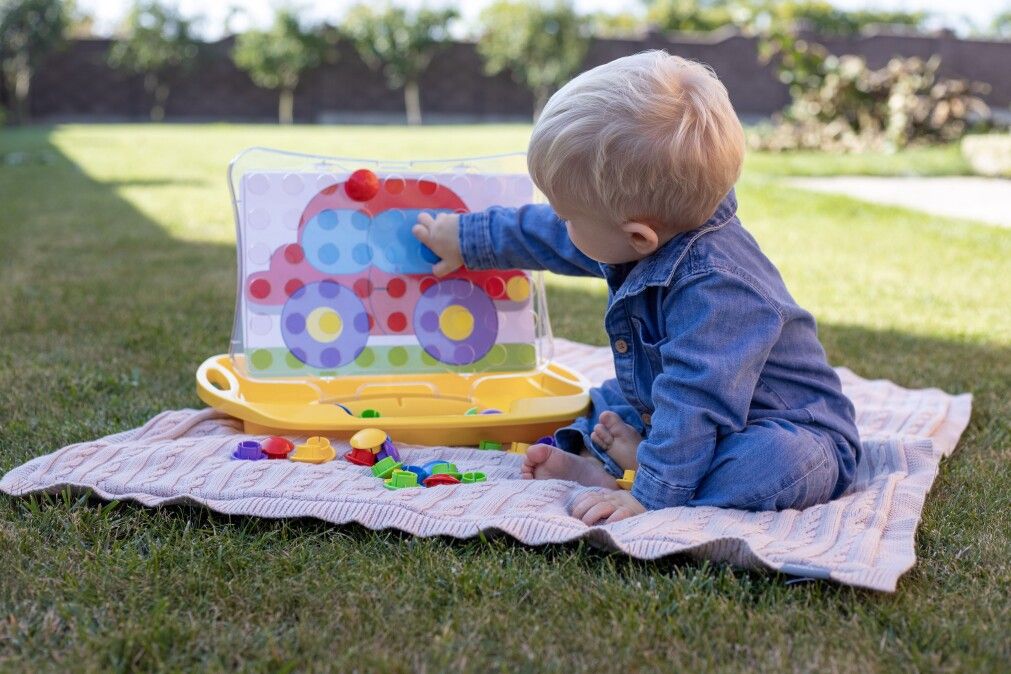
How to Overcome the Three-Year-Old Crisis Through Play: Tips for Parents
Your once obedient little one suddenly becomes stubborn, moody, and says "no" to everything — even before you finish your question? Congratulations — your child is going through the three-year-old crisis.
This is a normal and natural stage of development when children begin to form their own personalities. They want to be independent and make their own decisions. While it can be a challenging period for parents, it’s also a sign of healthy emotional and cognitive growth. Interestingly, the absence of this stage may indicate developmental delays.
So how do you guide your child through this time without turning daily routines into a power struggle? One of the most effective, gentle tools is play.
What is the Three-Year-Old Crisis?
This phase marks a significant leap in your child’s development. At around three years old, children start seeing themselves as individuals separate from their parents. They want to make choices, assert control, and express opinions. This often manifests as tantrums, oppositional behavior, or constant “no’s.” Though it may be frustrating, this resistance is an essential step in your child’s emotional maturity.
How Play Helps Navigate the Crisis
Play is a child’s natural language — the way they explore, learn, and express emotions. Through play, children:
-
Learn how to process and manage emotions
-
Practice behaviors they see in adults
-
Develop motor and cognitive skills
-
Build imagination, patience, and focus
Here are some practical play ideas that can help your child work through this stage with joy and learning.
🍽 Eat Together with Toys
Mealtime is often a battle zone for three-year-olds. Turn it into a game by inviting your child’s favorite soft toys to the table. Set up toy plates and give each "guest" some food. You might even scold the teddy bear for being fussy, while praising your child for being well-behaved. This role reversal gives your child a sense of responsibility and encourages cooperation.
🧱 Build and Make Mistakes
Use building blocks to construct a house together. Then, deliberately knock down a part of it and apologize. Let your child see your reaction and model how to handle mistakes. This teaches empathy and emotional control in a playful context.
📚 Tell Stories with a Lesson
Three-year-olds love imaginative stories. Share tales about little animals that misbehaved and what happened as a result. Use characters to gently convey lessons about behavior, kindness, and consequences — all in a non-preachy, engaging way.
🎨 Sculpt Emotions with Clay
Make “good” and “bad” characters with clay. For example, create an angry wolf that kicked a bunny out of the house. Let your child act as the wolf — growling, stomping, expressing feelings. Then, reshape the wolf into a kind one who plays and shares with the bunny. Ask your child which version of the wolf they would like to be. This encourages emotional awareness and empathy.
🧩 Focus with Puzzles
Simple puzzles or mosaics help improve concentration, patience, and fine motor skills. They also provide a calming activity that allows your child to feel in control and successful.
🧡 Love + Patience = A Healthy Transition
Avoid being overbearing but remain emotionally available. Encourage independence by letting your child try things on their own. Even if they struggle, wait until they ask for help — this builds confidence and resilience.
Final Thoughts
The three-year-old crisis isn’t a problem to be fixed — it’s an opportunity to support your child’s growth into a confident, self-aware individual. With empathy, creative play, and a positive attitude, you can help make this phase a rich and joyful experience for the whole family.
More hugs, more laughter, more connection — and the crisis will pass more gently than you expect.
three-year-old crisis, toddler behavior at 3, how to manage tantrums at 3 years old, play therapy for toddlers, activities for 3-year-olds, parenting tips for toddler behavior, emotional development at age 3